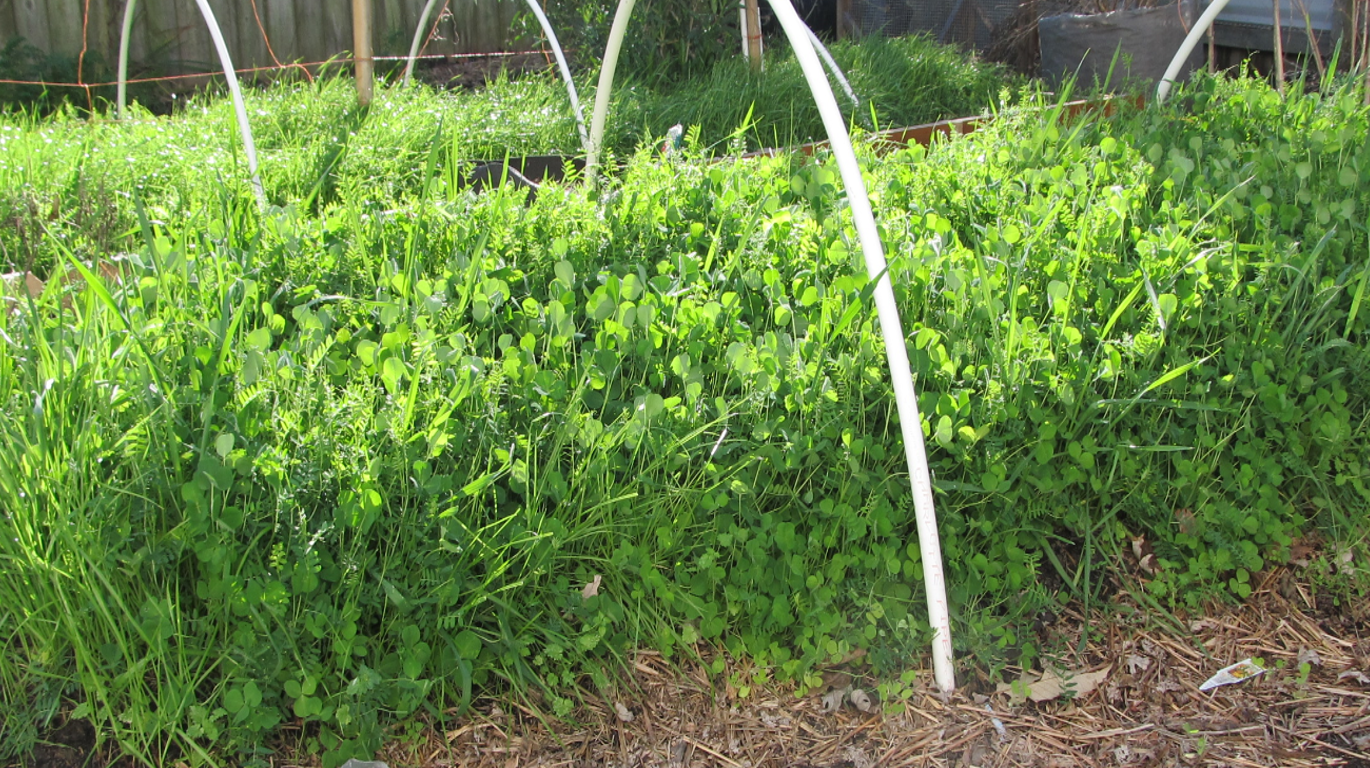|
The summer is over. The soil has done a good job providing for crops of tomatoes, peppers, eggplants, etc. If no fall crops are planned, an excellent idea to rejuvenate the soil is to plant a cover crop. This is an easy and quick method that will let nature enrich the soil during this winter downtime. In addition, cover crops help with soil erosion during the winter, can fight parasitic nematodes if needed, attract beneficial insects, and most importantly, add organic matter to the soil.
Cover crops are planted in early fall, at least 4-6 weeks prior to the first frost. It needs enough time to get a firm foundation of growth. Sowing by late September or early October will do the trick in the Tidewater area since we have such a late first frost in mid-November. It can be sown in an in-ground bed or a raised bed. No need to pull holdover summer crops that are still producing – interlace the cover crop between rows so it is established before first frost. Which cover crops work well in the Tidewater area? Oats, red clover, winter peas, and winter rye. Vetch is also used. Crops like red clover are beautiful when it flowers, however, this is not the goal in cover crops. No matter the crop, you’re going to stop it before it begins a large bloom to the extent that it would seed out. Choose a crop, or for that matter, choose 2 and mix them. Different crops offer different benefits to the soil, adding nitrogen, potassium or phosphorus. Before sowing, prepare the bed for the new seeds. Clean out old organic matter, rake it up, and compost this material. Aerate the soil by using a pitchfork and sticking it in around the bed to open up some air pockets. Wet the soil lightly so the seeds will have moisture to start the germination process. Broadcast or scatter the seeds throughout the bed. Lightly cover with another layer of soil about ½ inch thick. This top layer protects the seeds while it begins to germinate, but also discourages birds, squirrels and other wildlife from eating. Seeds that are packaged specifically to be a cover crop are usually inoculated. This is necessary to provide the soil with proper bacteria or fungus. An inoculant is generally a powdered form of bacteria or fungus that is added to the soil, via the seeds being coated with it prior to planting. If the seeds chosen have not been inoculated, this needs to be done. Inoculant can be purchased and the seeds soaked to absorb it. For the home gardener, purchasing an inoculated cover crop is easiest. Beds ready, seeds broadcasted, the crop will begin to grow. Let it continue until about 4-6 weeks out from the time to plant spring crops. Late January or early February is a general rule of thumb. One note, if the crop is close to flowering/seeding before this 4-6 week period, cut them back so the plants will not seed out into the bed. If it seeds itself, the crop could become a weed in the spring bed. Now it’s time to “stop” the growth and start it on the process of creating “green manure” to benefit the spring crops. Again, late January or early February, cut down the crop. Use clippers, a scythe, a weed whacker or any method to bring it down to about 4-6 inches. Rake this cut product around the bed for about an inch thick layer on top of the roots that are still in the soil. Remove excess plant material and put it in a composter. To begin the decomposition process, cover this bed with black plastic. Ensure that the plastic will stay down by securing it with bricks or rocks around the edges. The plastic needs to have some air to come in, so don’t seal it too tightly. Nature, using the heat of the sun, will now begin to decompose the crop. Check in about 3 weeks and see how the decomposition is coming along. Once the crop is all brown and dead, the plastic can be removed. This “green manure” is now ready to be raked in and new crops can be planted in this new organic material. It is not necessary to till it into the bed before planting spring crops. “No till beds” have an advantage of not disturbing the natural bacteria and mycorrhiza that help roots grow strong for a good crop. Repeating this process over a 2-3 year period will rebuild the soil to help grow great crops each year. |
AuthorLynn Francois ArchivesCategories |
|
Virginia Cooperative Extension is a partnership of Virginia Tech, Virginia State University, the U.S. Department of Agriculture, and local governments. Its programs and employment are open to all, regardless of age, color, disability, gender, gender identity, gender expression, national origin, political affiliation, race, religion, sexual orientation, genetic information, military status, or any other basis protected by law.
|
Master Gardener Help Desk
|

